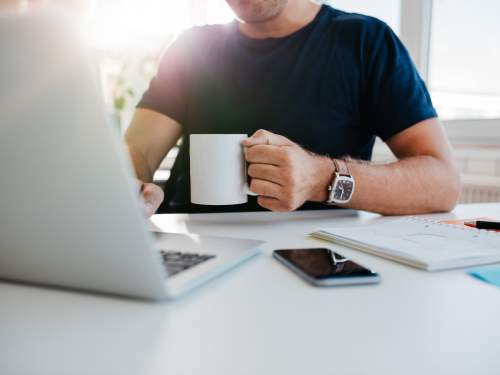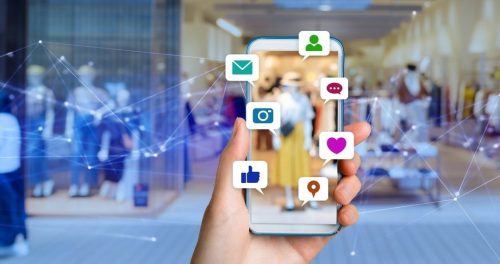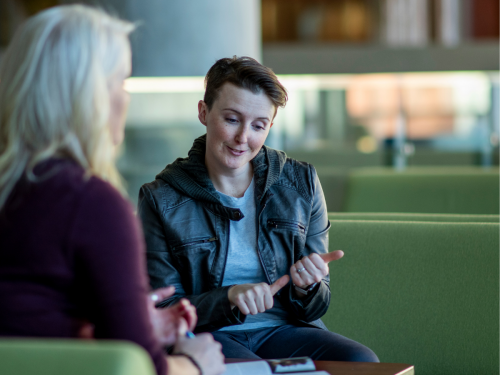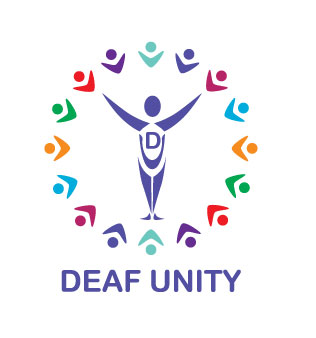What does accessibility mean to you? We’re most familiar with the term in relation to accessing products, services and environments. It’s important to people with disabilities. But what is involved in making something accessible?
Over the last 50 years, there have been significant changes to make communities more accessible. Policy changes, technological advancements and growing awareness have contributed to a more inclusive society.
But many barriers still exist.
Why accessibility is important to the deaf community
According to Public Health England, there are “around 11 million people across the UK with hearing loss”. Accessibility plays a fundamental role in their day-to-day lives. It allows deaf and hard of hearing people to participate in society and social life, something most of non-deaf people take for granted.
Inadequate accessibility bars deaf people from exercising rights and taking up opportunities that should be available to all. It can lead to fewer educational and job opportunities. It can also result in social withdrawal, a sense of isolation and mental health issues.
Barriers to basic access are barriers to inclusion and equality.
Accessible communication
Challenges faced by deaf and hard of hearing people are mostly related to communication barriers. We live in a majority-hearing world and deaf people are often faced with a lack of understanding or awareness of their communication needs.
It is a common misconception that deafness means you can’t hear at all. In fact, there are many levels of hearing loss. Every deaf person is unique and interacts with those around them a bit differently. Some use sign language, others use speech and lipreading, and some use a mixture, or other methods.
Communication barriers can result in a lack of confidence, depression, a sense of isolation and unemployment. Deaf and hard of hearing people have to make adjustments and efforts every day. The burden to make communication accessible shouldn’t have to be their responsibility alone. It’s vital that non-deaf people join in and play a part too.
Not sure how? Start by asking what type of communication they would like to use. Becoming more deaf aware can help remove some of the barriers. Deaf Unity runs Deaf Awareness, Introduction to BSL and accredited BSL courses. Get in touch to start learning more about what you can do to make communication easier.
There are assistive listening technologies and devices available which can be a big help. They include those listed below but the range is expanding all the time:
- Induction loops or amplifier systems
- Speech-to-text apps
- Video Relay Service (VRS) – some services such SignLive offer 24/7 availability
Some simple situational adjustments can also make a difference:
- Addition of visual display (text, images, icons)
- Written materials
- Accessible materials (BSL)
- Reducing background noise
- Availability of BSL interpreters
Digital accessibility
The world we live in is becoming increasingly digital. We have seen this trend accelerate tremendously in the last few months due to the pandemic. Huge parts of our lives have moved online – remote meetings, video classes, online shopping and education.
As a result, web accessibility is now being prioritised more than ever.

There are several different ways to make websites and online content accessible to deaf and hard of hearing people:
- Captions (open, closed or live) – make sure they are accurate and well synchronised
- Transcripts for video and audio content
- High-quality, clear audio with minimal background noise
- Use of clear and simple language
- Multiple methods of contact (email, live chat etc)
Support for sign language is another way to improve accessibility. Bear in mind that many deaf and hard of hearing people don’t know or use BSL. For this reason, captions and transcripts alongside BSL could be preferable. In addition, they can be easily translated with tools such as Google Translate.
British Deaf News share more online accessibility tips for deaf people here.

Including deaf voices
Accessibility is all about inclusiveness: a way to ensure that no one is excluded. When we create accessible solutions and environments, it benefits everyone, not only those with disabilities. Many technologies that were initially developed for people with disabilities are now widely used by the general population. Think captions on social media, image recognition, speech to text.
There’s a very interesting BBC Future article on ‘Why coronavirus may make the world more accessible’. One of the people interviewed is Mikaela Patrick, Inclusive Design Researcher at the Global Disability Innovation Hub, who said: “One of the ways to ensure society continues to become more accessible is by integrating the voices of disabled people in the design and development of policy, technology and infrastructure”.
It’s crucial that people with disabilities, including those who are deaf and hard of hearing, are consulted and engaged in the development of new technologies and solutions.

Tips for increasing accessibility
Through our actions and attitudes, we can all contribute to making society more inclusive and accessible. Here are a few general tips on how to better communicate with someone who is deaf or hard of hearing. But remember to always ask how they prefer to communicate.
- Make sure you have the deaf person’s attention before you start speaking
- Stand in front of them
- Don’t shout – speak clearly, not too quickly, enunciate without exaggeration
- Note the lighting – is it bright enough to see / lip read?
- Note the background noise – can you move somewhere quieter?
For more tips check out other articles on our site such as 10 Things Hearing People Could Do to Help Deaf People in 2021 and 5 Tips for Communicating with People who Lipread.
Go beyond the individual conversation and raise awareness – share posters like ‘How can you be more Deaf aware’ from SignHealth or ‘Communication Tips’ from Royal National Institute for Deaf People (RNID). Share communication tips on social media.
This article was written by Ania Tumm-Brennan, a marketing consultant and copywriter. Ania joined the Deaf Unity team to help promote diversity and social inclusion.
Sign up to our newsletter for more content like thisLooking for more support? Check out Deaf Unity’s projects to find out what we can do for you, and visit our articles & interviews page for more deaf tips and advice.

